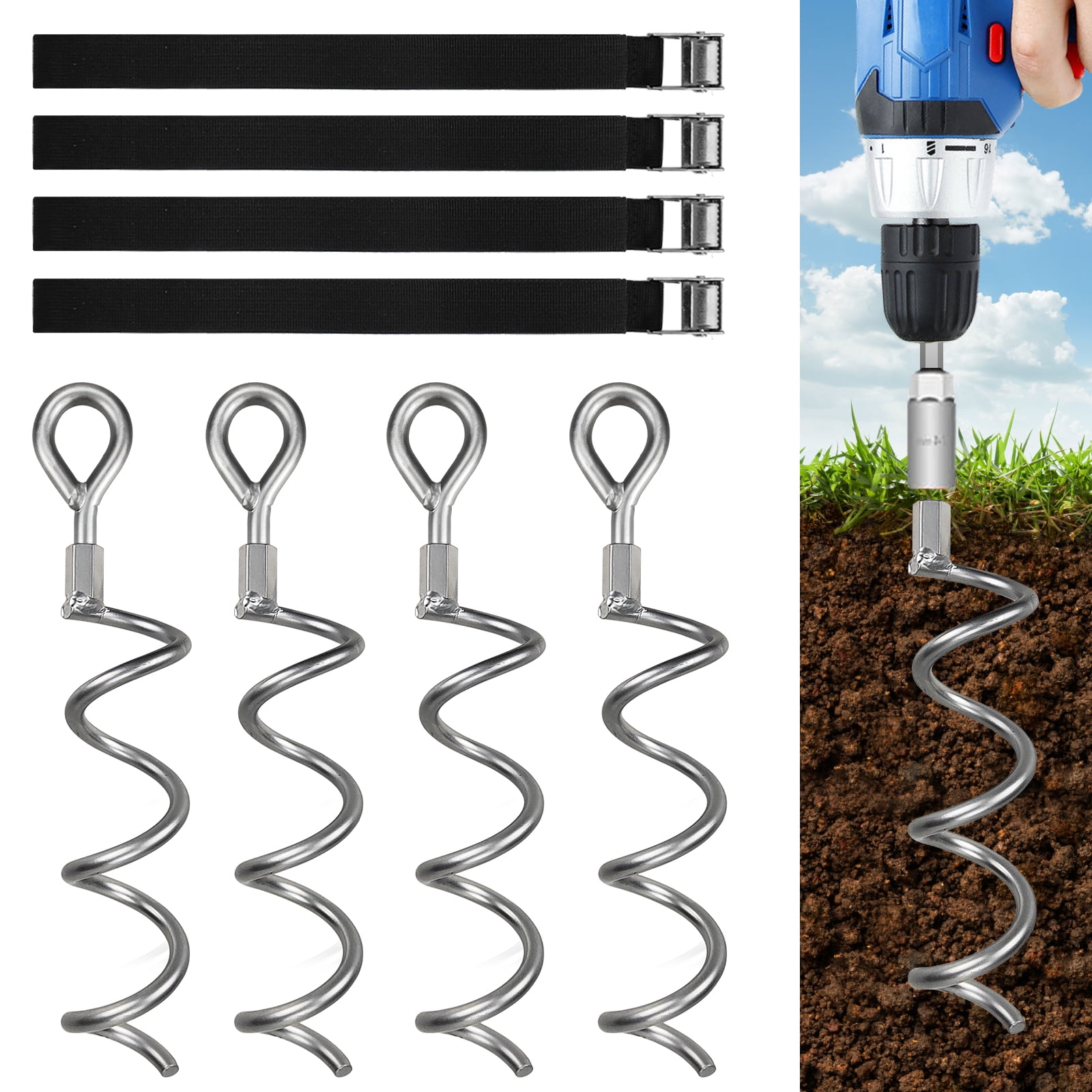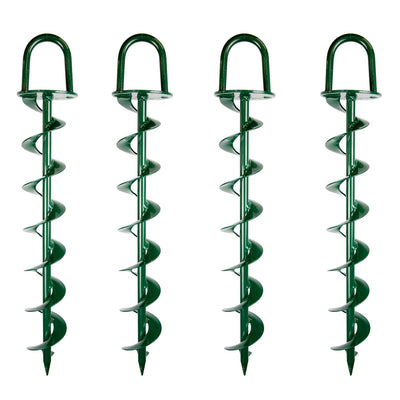Construction Specialists Offer Tips on the Best Ground Anchor Solutions
Construction Specialists Offer Tips on the Best Ground Anchor Solutions
Blog Article
Explore the Various Sorts Of Ground Anchor for Your Next Project
When getting started on a building or landscaping task, comprehending the various kinds of ground supports offered is essential to ensuring both security and resilience (Ground Anchor). From auger supports, which master varied soil conditions, to stake anchors made for short-term installations, the options are many. Additionally, concrete and screw anchors present unique benefits in certain scenarios, while deadman supports are customized for applications needing resistance to side forces. The selection of a suitable support kind can considerably influence the total success of your job, motivating additional expedition into their particular benefits and applications.

Auger Anchors
Auger anchors are a popular selection in different building and construction and landscaping projects as a result of their one-of-a-kind design and efficient securing capacities. These supports consist of a helical screw-like shaft that is driven right into the ground, enabling a protected and stable hold. The spiral design promotes simple installment and makes best use of resistance against lateral forces, making auger anchors specifically reliable in applications such as fence, short-lived frameworks, and erosion control.
The installation process of auger anchors is fairly simple. They can be manually or mechanically set up, depending on the dimension and required depth. This flexibility allows for their usage in varied dirt problems, from sandy to clayey terrains. Moreover, auger anchors can be easily removed and reused, which includes in their cost-effectiveness and sustainability.
One of the considerable advantages of auger supports is their ability to disperse lots uniformly across the bordering dirt, minimizing the threat of dirt disturbance and decreasing ecological effect. Additionally, they are less prone to loosening up or heaving over time compared to standard anchoring approaches. Auger anchors are an exceptional selection for jobs requiring long lasting and dependable anchoring services.

Stake Anchors
When it concerns securing structures in a variety of outside applications, risk supports supply a dependable and uncomplicated option. These anchors are normally built from sturdy materials such as steel or light weight aluminum, made to withstand ecological stresses while providing ideal security. Their basic design allows for fast installation, making them an ideal selection for temporary or permanent anchoring requirements.
Stake supports are specifically useful in protecting camping tents, covers, and other lightweight structures against wind and weather condition. They function by being driven into the ground at an angle, creating a strong hold that resists pull-out pressures - Ground Anchor. The effectiveness of risk supports depends upon numerous factors, consisting of soil kind, moisture material, and the angle of installation
For included security, lots of risk anchors include accessory factors for ropes or bands, permitting tension modifications as needed. In applications such as landscaping or building, they can successfully stabilize devices or structures on irregular terrain. Overall, risk supports provide a versatile and cost-effective remedy for securing numerous exterior installments, making them a recommended selection for contractors and DIY fanatics alike.
Concrete Anchors
Concrete supports supply a durable remedy for securing structures to concrete surfaces, ensuring stability and security in different applications. These anchors are vital for tasks ranging from property buildings to massive industrial installments. They come in different types, including development anchors, adhesive anchors, and undercut supports, each designed for details lots requirements and environmental problems.
Sticky supports make use of high-strength epoxy or resin to bond the anchor to the concrete, offering exceptional load-bearing abilities, particularly in broken concrete circumstances. Undercut supports produce a special form within the concrete, offering outstanding holding power, particularly in applications where tensile lots are widespread.
When executed properly, concrete supports dramatically improve the structural honesty of different jobs, making them essential in modern-day building and Find Out More construction practices. Understanding the certain demands of your job will certainly assist in selecting the best type of concrete support for the task.
Screw Anchors

Screw anchors are a flexible fastening option that can be effectively utilized in a variety of applications where standard concrete anchors may not be adequate. These anchors include a helical layout that permits them to be quickly driven into the ground, making them suitable for usage in soil and various other substrates. Their one-of-a-kind framework provides exceptional holding power and resistance to pull-out forces, making them appropriate for countless jobs, from landscaping to architectural support.
One of the key advantages of screw supports is their simplicity of installation. They call for marginal equipment and can often be installed without the demand for excavation, which conserves both time and labor prices. In addition, screw anchors can be gotten rid of and reused, supplying a lasting solution for momentary applications.
Screw anchors are specifically beneficial in areas where dirt problems are testing, such as sandy or loosened dirts. Their ability to be set up at differing depths permits modification based on particular project demands. On the whole, screw supports supply a effective and reputable anchoring method, making them a superb selection for designers and contractors seeking reliable remedies for their jobs.
Deadman Anchors
Deadman anchors work as a robust solution for stabilizing frameworks in challenging problems, specifically where standard anchoring approaches might fail. These supports consist of large, hefty items buried underground, which produce resistance versus lateral pressures. The layout normally entails a straight element, such as a block of concrete or a metal plate, hidden in the dirt, to which cable televisions or bands are attached.
The performance of deadman supports hinges on their capacity to distribute tons over a larger location, minimizing the danger of failure in unpredictable soil problems. They are particularly valuable in applications such as retaining walls, short-lived structures, and slope stabilization, where dirt movement can More hints jeopardize the honesty of the structure.
Installment of deadman anchors needs careful planning to guarantee they are their explanation positioned at the appropriate deepness and positioning, optimizing their load-bearing capacity. While they might call for more labor and product than lightweight anchors, their reliability in unfavorable problems makes them vital for long-term tasks. Deadman anchors are functional and can be adapted to numerous applications, making them a go-to selection for engineers encountering special challenges in their jobs.
Final Thought
Auger supports succeed in diverse dirt problems, while risk anchors match short-lived applications. For concrete surfaces, growth and adhesive supports provide reputable choices, and screw anchors supply versatility in difficult surfaces.
In addition, concrete and screw supports present one-of-a-kind benefits in specific situations, while deadman anchors are customized for applications calling for resistance to lateral forces - Ground Anchor.Auger supports are a prominent option in numerous construction and landscape design projects due to their unique layout and efficient securing capacities. They come in different types, including expansion supports, glue supports, and undercut supports, each created for certain load needs and ecological conditions
Sticky supports use high-strength epoxy or resin to bond the anchor to the concrete, supplying premium load-bearing capacities, specifically in split concrete scenarios. Overall, screw anchors supply a reputable and effective anchoring technique, making them an excellent choice for specialists and engineers looking for efficient remedies for their tasks.
Report this page